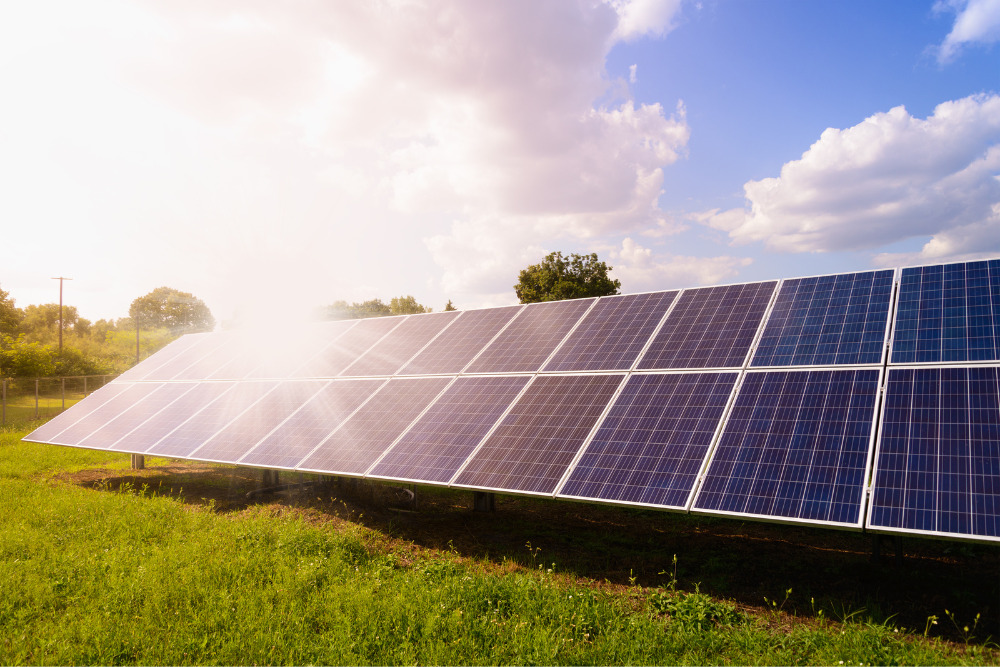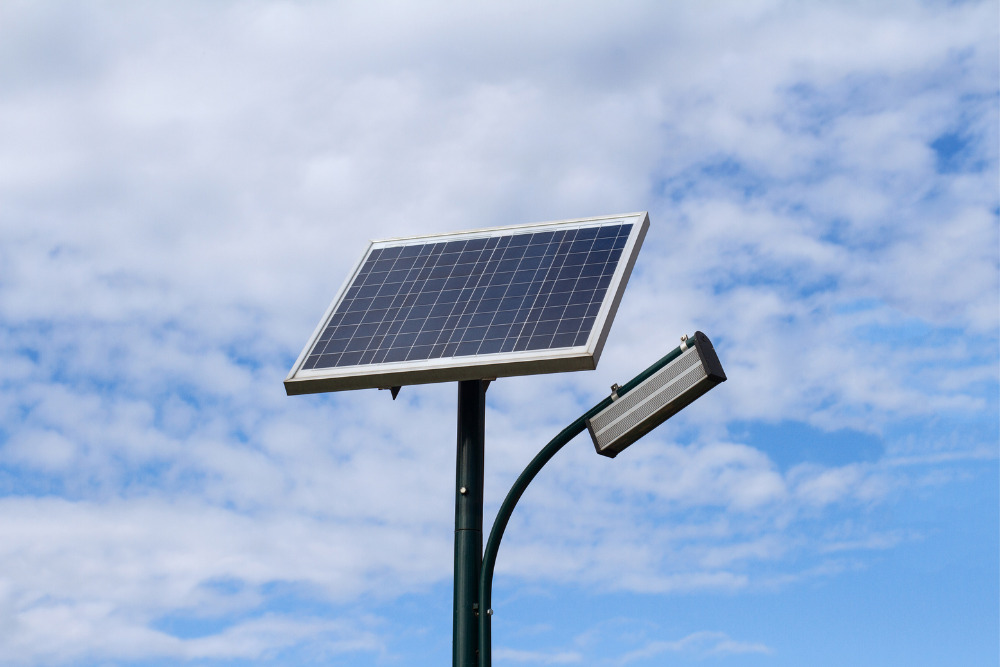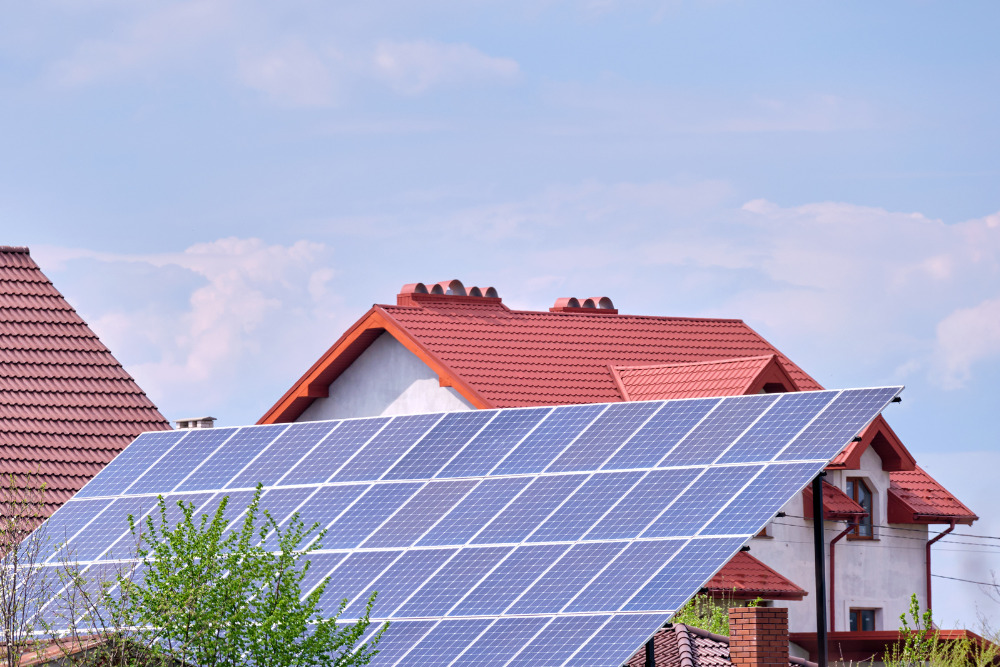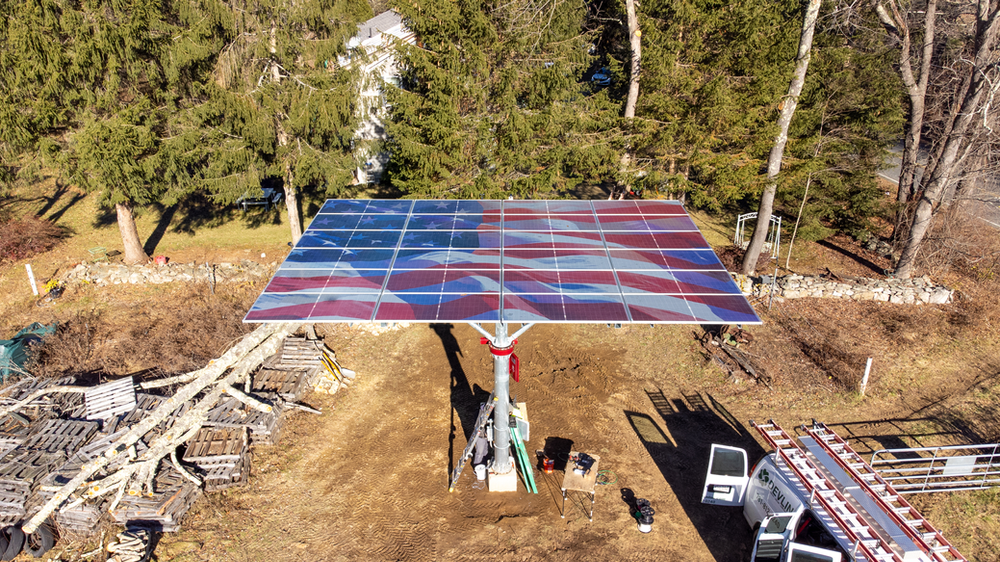
Ground-mounted solar panels are an option if you want to incorporate solar energy into your home but your roof is less than ideal for solar panel installation.
Not every roof is perfectly positioned or big enough to capture enough sun to power a home. Ground-mounted solar systems make solar energy accessible to many people that want renewable energy. Find out how ground-mounted solar differs from rooftop solar and whether this strategy is right for you.
How Do Ground-Mounted Solar Panels Work?
Ground-mounted solar panels use the same solar panels as rooftop systems, just installed in a different locations.
There are two types of ground-mount systems: standard ground mounts and pole-mounted systems. Standard ground mounts require more land, while pole mounts have a smaller footprint and the added advantage having tilt and solar tracker mechanisms installed to optimize energy production throughout the seasons.
The ground-mounted solar array creates energy production just as rooftop solar systems do. However, they are useful for homes that do not offer ideal conditions for rooftop installation.

What Are The Benefits Of Ground-Mounted Solar?
There are several benefits of ground-mounted systems including:
- Efficiency: Being that these solar power systems are installed on the ground, you have a lot more control over which direction you want your panels to face with regard to the sun, as well as their degree of tilt. This leads to more efficiency than roof-mounted systems.
- Accessibility: Because you don’t have to climb up to your roof to reach your solar panel system, the ground-mounted system is much more accessible for things such as maintenance or repair.
- Visibility: If you have a large property, you may have the option to place your solar panels out of sight, or at least in a less-visible area.
- Cost-effective: Any solar energy system is going to end up saving you money on electric bills in the long run.
- Incentives: Just like with rooftop panels, you can take advantage of many tax credits, incentives, and rebates to reduce the cost of your system cost.
How Much Energy Does Ground-Mounted Solar Produce?
There are several factors that play into how much energy solar panels produce. A single 350-watt solar panel generates around 0.72 kWh of electricity per day.
The average house in the United States uses around 10,000 kWh year, so it would need at least 30, 350-watt panels to completely fulfill the home’s energy needs.
Most rooftop solar arrays need between 260-340 square feet of space, which isn’t always available in a prime south-facing location of the roof. In these cases, many homeowners utilize ground space or install a solar carport to generate extra power.
Of course, certain factors affect performance. Your solar panels should be placed in an open space, free of debris or vegetation that may obstruct the sunlight. The time of year, where you live, and the efficiency of the panel will also affect how much electricity your panels produce.

What Is The Lifespan Of A Ground-Mounted Solar Panel System?
On average, solar panels can last between 25 and 30 years, but this varies depending on many factors including maintenance, damage, and how they were installed.
The installation process, though it may seem straightforward, can be tedious and must be done properly. The location of your solar panel system is very important, and if you decide to make it a DIY solar project, you must be sure you are installing the panels correctly.
Regular maintenance, clearing obstructions, and professional inspections are also required to ensure the panels are performing properly.
Is It Cheaper To Install Solar Panels On The Ground?
The answer to this depends on several factors, but generally speaking, it is not cheaper to install solar panels on the ground.
Ground-mounted solar arrays need additional installation items and labor, such as a concrete and steel foundation and trenching. You will also need a racking system, or photovoltaic mounting system, similar to systems used in rooftop solar.
In heavily wooded, off-grid locations, pole-mounted solar arrays with a single-axis or dual-axis tracking system allows the panels to rise above the trees and optimize sun absorption throughout the year. While the upfront cost is typically more than that of a rooftop system, for many homeowners it is well worth it.
How To Improve The Aesthetics Of Ground-Mounted Solar
If a bulky blue or black solar array greeting you as you come up the driveway is unappealing, SolarSkin overlays are an excellent way to camouflage the panels.
With a traditional rooftop installation, these custom-printed solar panel overlays can be designed to match the roof’s shingles or tiles. With a ground-mounted system, many homeowners choose to make an artistic expression with bold designs, like an American flag solar array or panels that appear to be reflecting the sky.



